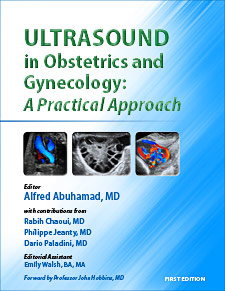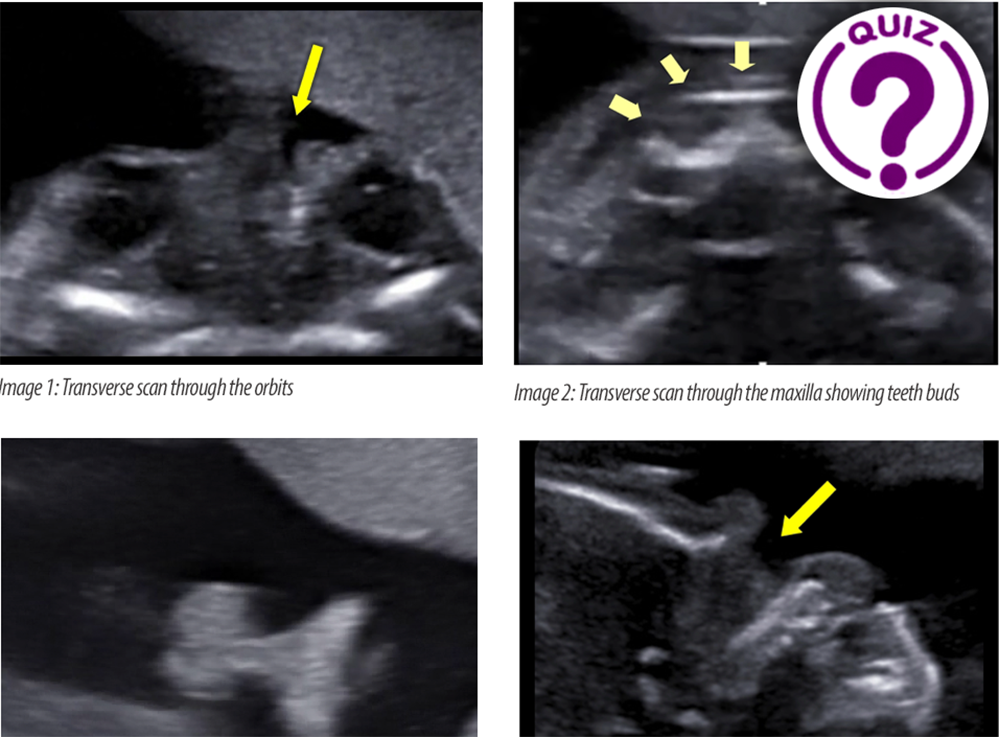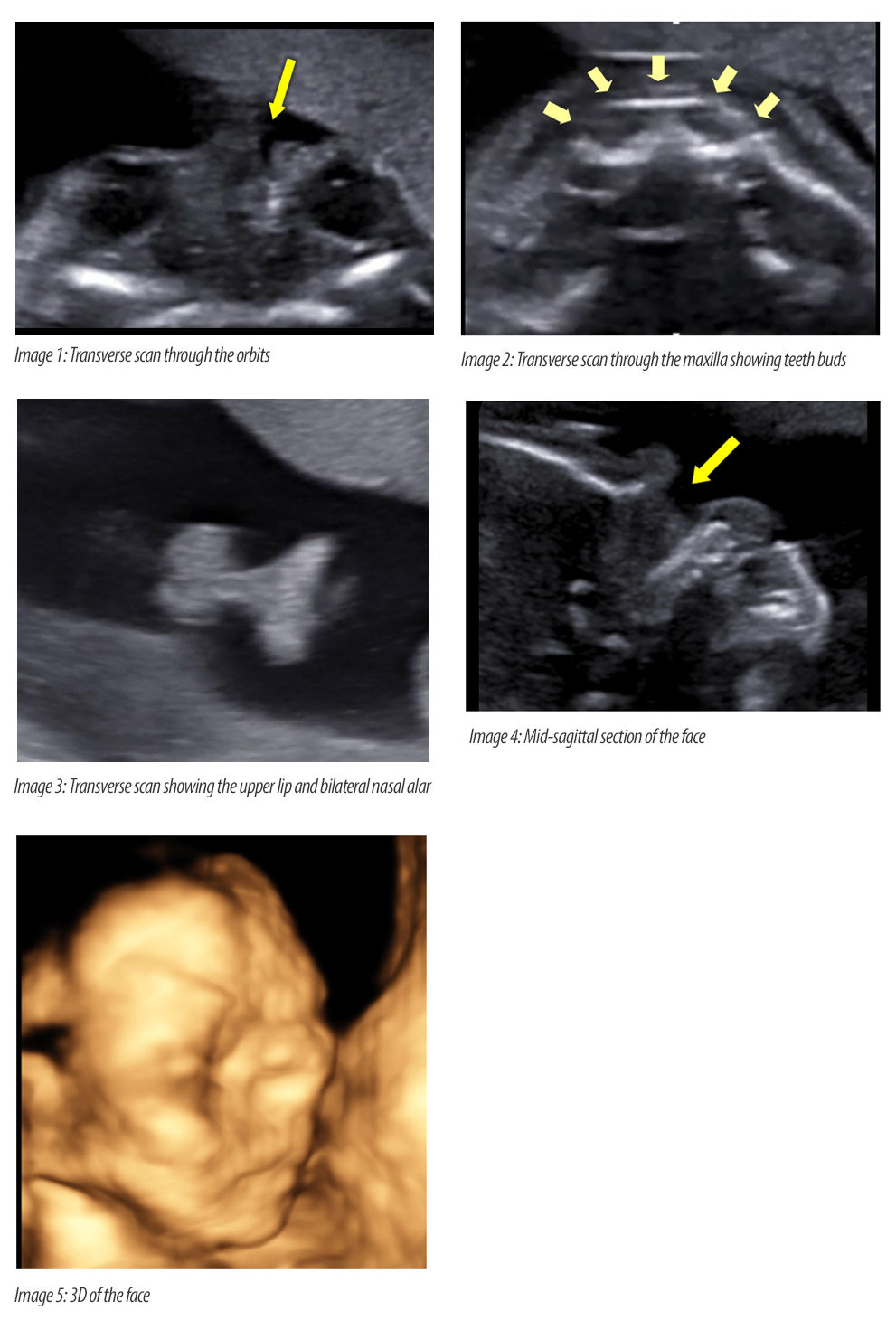
Ultrasound the Best #13: View of Aortic arch with its Branches (BA,LCCA,LSA)
October 9, 2020
Ultrasound in Obstetrics & Gynecology: A Practical Approach
October 13, 2020Anh Lam*, Nguyen Ha*
* Imaging Diagnostic Department, Tu Du Hospital, Vietnam
Corresponding author: drlamngocanh@gmail.com
Clinical History:
A 32 year-old pregnant woman, PARA 0000, was sent to our hospital at 20 weeks and 5 days. She had no history of medical diseases and abuse of drugs or alcohol. Her family history was normal.
Video 01: UPPER LIP
Video 02: NOSE
Video 03: ORBIT
Video 04: MAXILLARY
Quiz-summary
0 of 1 questions completed
Questions:
- 1
Information
View the October Case below, answer the question and then click check >
You have already completed the quiz before. Hence you can not start it again.
Quiz is loading...
You must sign in or sign up to start the quiz.
You have to finish following quiz, to start this quiz:
Results
0 of 1 questions answered correctly
Your time:
Time has elapsed
You have reached 0 of 0 points, (0)
Categories
- Not categorized 0%
- 1
- Answered
- Review
-
Question 1 of 1
1. Question
Question: Which type is it of this facial cleft based on the Tessier’s classification?
Correct
CORRECT ANSWER EXPLAINED BELOW Correct answer is: Bilateral Tessier Type 3
Click here to view after photos after birth >>
Explanation:
This is a bilateral Tessier type 3 because the cleft is from the nasal alar up to the medial orbit bilaterally. However, this is a rare case of Type 3 because the upper lip and the maxilla are intact.
Facial cleft – also called craniofacial cleft – is one of the most commonly arising non‐lethal congenital abnormalities. The worldwide incidence ranges between 1 and 2.2/1000, depending on the geographical region [1].
The classification proposed by Tessier uses the numbers from 0 to 14 depending on the location of a cleft in relation to the median facial line. Clefts number 0 to 6 are craniofacial defects, while clefts number 8 to 14 are cerebrocranial defects [2]. The classification is simple, logical and has been widely accepted due to the precise description of a defect and facilitation of comparison of various defects between centers.
References
[1] Moore, MH. Rare craniofacial clefts. The Journal of Craniofacial Surgery 1996; 7 (6): 408–11.
[2] Tessier P. Anatomical classification of facial, cranio-facial and latero-facial clefts. Journal of Maxillofacial Surgery 1976; 4 (2): 69–92.
Incorrect
CORRECT ANSWER EXPLAINED BELOW Correct answer is: Bilateral Tessier Type 3
Click here to view after photos after birth >>
Explanation:
This is a bilateral Tessier type 3 because the cleft is from the nasal alar up to the medial orbit bilaterally. However, this is a rare case of Type 3 because the upper lip and the maxilla are intact.
Facial cleft – also called craniofacial cleft – is one of the most commonly arising non‐lethal congenital abnormalities. The worldwide incidence ranges between 1 and 2.2/1000, depending on the geographical region [1].
The classification proposed by Tessier uses the numbers from 0 to 14 depending on the location of a cleft in relation to the median facial line. Clefts number 0 to 6 are craniofacial defects, while clefts number 8 to 14 are cerebrocranial defects [2]. The classification is simple, logical and has been widely accepted due to the precise description of a defect and facilitation of comparison of various defects between centers.
References
[1] Moore, MH. Rare craniofacial clefts. The Journal of Craniofacial Surgery 1996; 7 (6): 408–11.
[2] Tessier P. Anatomical classification of facial, cranio-facial and latero-facial clefts. Journal of Maxillofacial Surgery 1976; 4 (2): 69–92.


